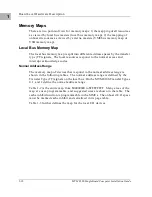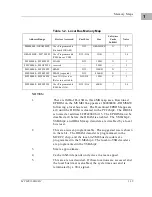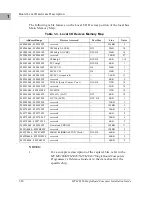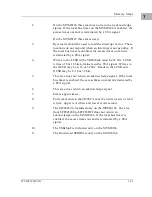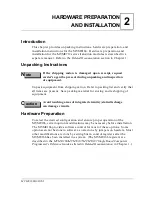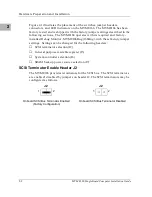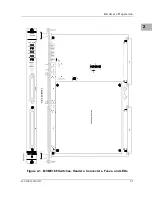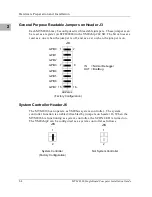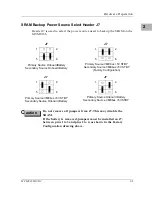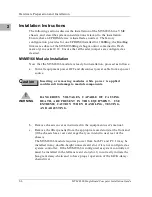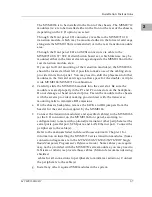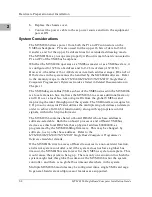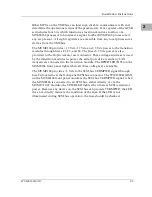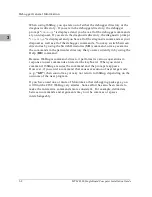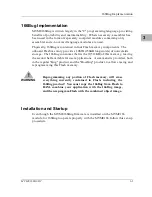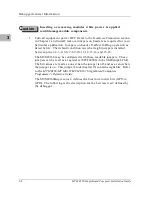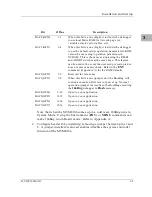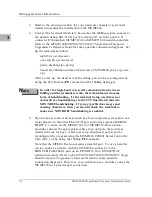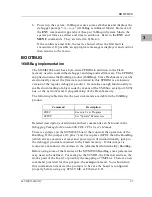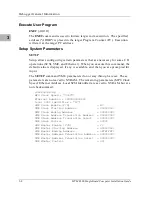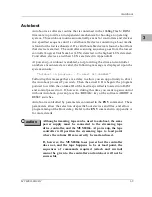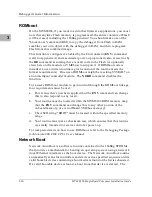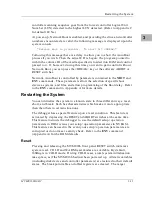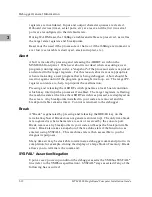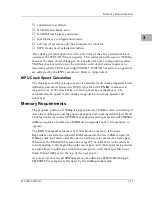
Hardware Preparation and Installation
2-8
MVME166 Single Board Computer Installation Guide
2
h. Replace the chassis cover.
i.
Connect the power cable to the ac power source and turn the equipment
power ON.
System Considerations
The MVME166 draws power from both the P1 and P2 connectors on the
VMEbus backplane. P2 is also used for the upper 16 bits of data for 32-bit
transfers, and for the upper 8 address lines for extended addressing mode.
The MVME166 may not operate properly without its main board connected to
P1 and P2 of the VMEbus backplane.
Whether the MVME166 operates as a VMEbus master or as a VMEbus slave, it
is configured for 32 bits of address and for 32 bits of data (A32/D32).
However, it handles A16 or A24 devices in certain address ranges. D8 and/or
D16 devices in the system must be handled by the MC68040 software. Refer
to the memory maps in the MVME166/MVME167/MVME187 Single Board
Computers Programmer’s Reference Guide as listed in Related Documentation in
Chapter 1.
The VME Subsystem Bus (VSB, a subset of the VMEbus) used in the MVME166
is a local extension bus. It allows the MVME166 to access additional memory
and I/O over a local bus, removing traffic from the global VMEbus and
improving the total throughput of the system. The VSB interface occupies 64
I/O pins on connector P2 and utilizes the multiplexing of address and data in
order to achieve full 32-bit functionality, along with appropriate control
signals, within the 64-pin allotment.
The MVME166 contains shared onboard DRAM whose base address is
software-selectable. Both the onboard processor and offboard VMEbus
devices see this local DRAM at base physical address $00000000, as
programmed by the MVME166Bug firmware. This may be changed, by
software, to any other base address. Refer to the
MVME166/MVME167/MVME187 Single Board Computers Programmer’s
Reference Guide for details.
If the MVME166 tries to access offboard resources in a non-existent location,
and is not system controller, and if the system does not have a global bus
timeout, the MVME166 waits forever for the VMEbus cycle to complete. This
would cause the system to hang up. There is only one situation in which the
system might lack this global bus timeout: the MVME166 is not the system
controller, and there is no global bus timeout elsewhere in the system.
Multiple MVME166 modules may be configured into a single VME card cage.
In general, hardware multiprocessor features are supported.
Summary of Contents for MVME166
Page 1: ...MVME166 Single Board Computer Installation Guide MVME166IG D2 ...
Page 12: ...xii ...
Page 14: ...xiv ...
Page 46: ...Hardware Preparation and Installation 2 10 MVME166 Single Board Computer Installation Guide 2 ...
Page 70: ...Debugger General Information 3 24 MVME166 Single Board Computer Installation Guide 3 ...
Page 114: ...Disk Tape Controller Data B 6 MVME166 Single Board Computer Installation Guide B ...
Page 116: ...Network Controller Data C 2 MVME166 Single Board Computer Installation Guide C ...



